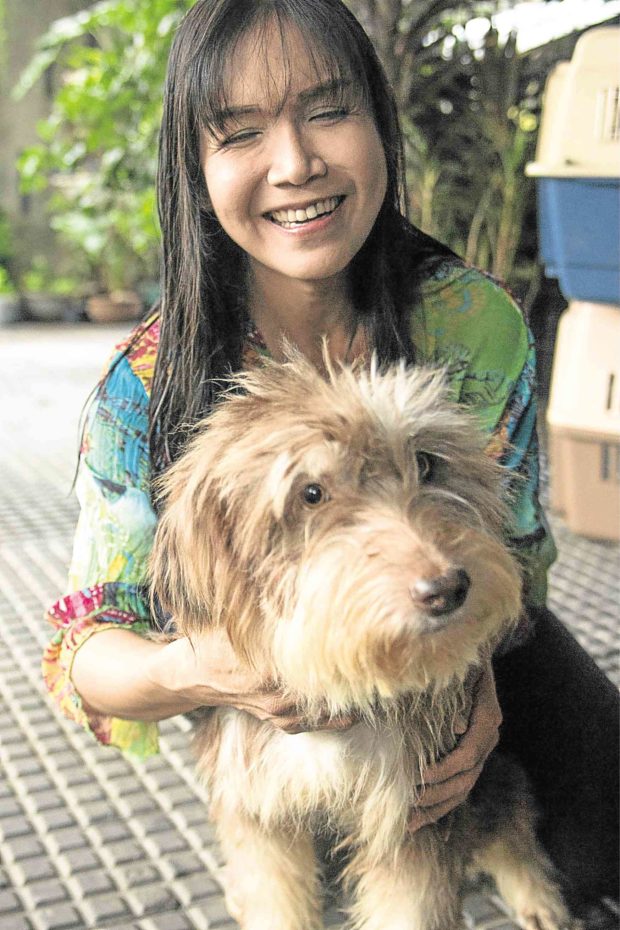
The first time Carina Noralyn Suarez flew with her pets was in 2007, when she left her life in Japan and returned to Manila with her beloved Pomeranians Duchess and Princess. Since then, she has traveled with her multitude of dogs all over the Philippines and to Thailand, Italy and Korea, where they have competed and bagged awards in dog shows.
Suarez is now a top breeder of Poms and runs a shelter for rescue dogs and cats out of her home. She is also building a sanctuary for her rescues in Cavinti, Laguna, that she’s calling Mama’s Cradle. For this devoted animal lover, the comfort of her pets while traveling is of utmost importance.
“I prefer to check them in with me but it can be more costly than cargo,” she said. “Thai Airways is good with pets. Sadly, they no longer allow pets in the cabin. Korean Air still does. Delta allows only small pets in the cabin.”
Different airlines have different policies when it comes to pets. Some are friendlier than others.
Only as cargo
For many airlines, including Philippine Airlines and Cebu Pacific, animals can fly only as cargo. Both PAL and Cebu Pacific welcome service dogs in the cabin, with PAL allowing emotional support dogs to ride with their owners on flights to and from the United States.
PAL does not accept the transport of brachycephalic or snub-nosed dog breeds on all their flights, whether domestic or international, unless they are service or emotional support dogs that will be traveling with the passenger in the cabin. According to PAL’s pet policy, “These animals are susceptible to increased risk of heatstroke and breathing problems when exposed to stress or heat.”
On the company website, PAL lists 29 brachycephalic dog breeds including Shar-pei, pug, French bulldog, Shih Tzu, Rotweiller, Lhasa Apso, Chow-Chow and Pekingese.
Flying with your dog isn’t as simple as booking a ticket and going. A lot of preparation goes into it. You will need documents, including vaccination certificates and exit and entry permits from the Philippine Bureau of Animal Industry (BAI).
“You need to bring a health certificate from your vet, and you also need to apply for an export permit at the BAI Office in Visayas Avenue. This is required for international flights,” Suarez said.
The BAI also issues local transport permits.
If flying abroad, look up the regulations and restrictions of the country you’re planning to bring your pet into and comply with them. For example, if you want to take your pet to Japan, you need to notify the Animal Bureau Quarantine of Japan at least 40 days before your arrival.
Before booking your flight, call the airline. Communicating with them is essential. Ask if the specific plane used for the flight you have chosen can take live animals such as the one you plan to bring with you.
“It is important that you call the airline in advance to ask if they allow pets, and to find out which flights have ventilation in the cargo area before booking your ticket,” said Suarez.
But even this isn’t always foolproof, Suarez said. “It can be stressful. PAL can suddenly change aircraft to one without ventilation, so the pet will be left behind and they would need to fly on the next possible flight, which could be in the next day or two.”
Cebu Pacific asks passengers who intend to bring their pets to contact their cargo services team to make arrangements. Cebu Pacific transports dogs, cats, turtles and some marine animals.
Charges apply, of course. For PAL flights, pets are automatically considered extra baggage. You can be charged up to 300 percent of the applicable excess baggage rate, depending on the flight and the size and weight of your pet and the container.
For domestic flights, you will pay from P1,000 to P10,000 depending on the weight of your pet with the container.
Your pet will need to be in a crate for travel. If your dog is traveling with you in the cabin, the carrier must fit under the seat in front of you and your dog has to stay in it for the duration of the flight.
Airline-approved
Pets traveling in cargo need to be in airline-approved sturdy hard shell or wire crates. Make sure the crate is big enough for your pet to sit in, stand up in and to turn around in. Make sure your pet is comfortable staying in his or her crate for long periods by crate training him or her before your trip.
Label the crate properly. Include your dog’s name, your name, your address, and your contact number. Don’t leave your pet’s leash in the crate as it might cause injury.
To avoid accidents in the crate, stop feeding your pet at least four hours before the flight and let your dog go potty right before he or she goes into the crate. Make sure your pet has access to clean water for the duration of the flight.
If your pet is flying as cargo, arrive at least three hours before your flight to make sure you have ample time to make all necessary arrangements. Stress the importance of your pet being transported on the same flight you are boarding.
Before saying goodbye to your pet, find out where you should claim him or her at your destination. It could be the baggage claim area at the airport but it might also be a cargo terminal. “It can take a long time before they are released,” said Suarez.
As an export officer, Catherine Albino has been responsible for the safe transport of thousands of birds on various airlines for the past 15 years. We asked her for pro secrets behind making sure animals thrive and survive while traveling in cargo.
“You must ensure that you have all permits and health documents required by your destination country,” Albino said.
“Make sure your pet is packed in an International Air Transport Association-approved transport container and that they have access to water and, in the case of birds, dry food. Also, make sure the plane’s cargo has ventilation. All these steps will ensure a safe and comfortable trip for the animals. You don’t want to stress them out.”
But if it were up to Suarez, her pets would always travel with her in the cabin. “There are too many risks in cargo,” she said.














































